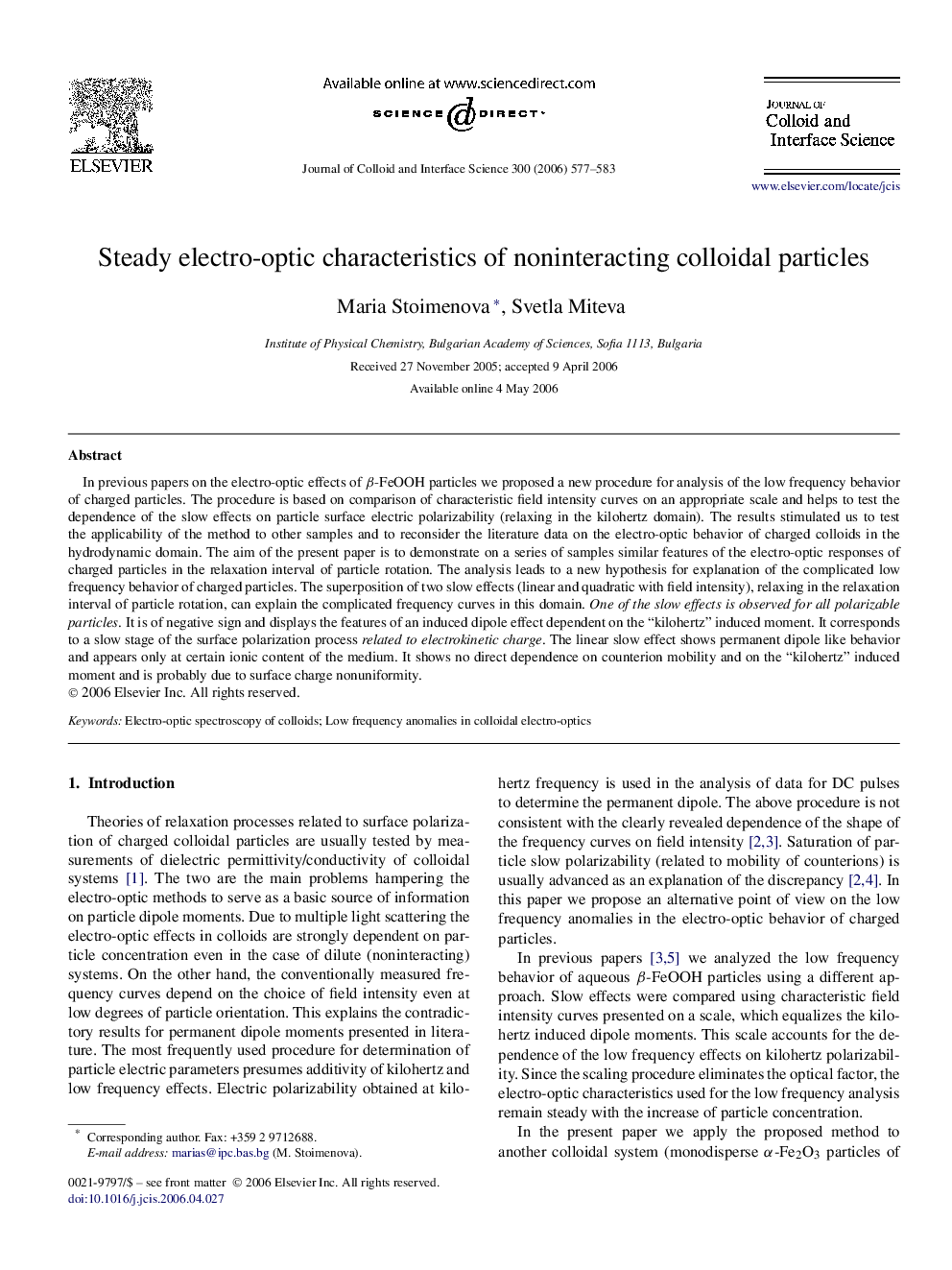| Article ID | Journal | Published Year | Pages | File Type |
|---|---|---|---|---|
| 612995 | Journal of Colloid and Interface Science | 2006 | 7 Pages |
In previous papers on the electro-optic effects of β-FeOOH particles we proposed a new procedure for analysis of the low frequency behavior of charged particles. The procedure is based on comparison of characteristic field intensity curves on an appropriate scale and helps to test the dependence of the slow effects on particle surface electric polarizability (relaxing in the kilohertz domain). The results stimulated us to test the applicability of the method to other samples and to reconsider the literature data on the electro-optic behavior of charged colloids in the hydrodynamic domain. The aim of the present paper is to demonstrate on a series of samples similar features of the electro-optic responses of charged particles in the relaxation interval of particle rotation. The analysis leads to a new hypothesis for explanation of the complicated low frequency behavior of charged particles. The superposition of two slow effects (linear and quadratic with field intensity), relaxing in the relaxation interval of particle rotation, can explain the complicated frequency curves in this domain. One of the slow effects is observed for all polarizable particles. It is of negative sign and displays the features of an induced dipole effect dependent on the “kilohertz” induced moment. It corresponds to a slow stage of the surface polarization process related to electrokinetic charge. The linear slow effect shows permanent dipole like behavior and appears only at certain ionic content of the medium. It shows no direct dependence on counterion mobility and on the “kilohertz” induced moment and is probably due to surface charge nonuniformity.
Graphical abstractFigure optionsDownload full-size imageDownload as PowerPoint slide
